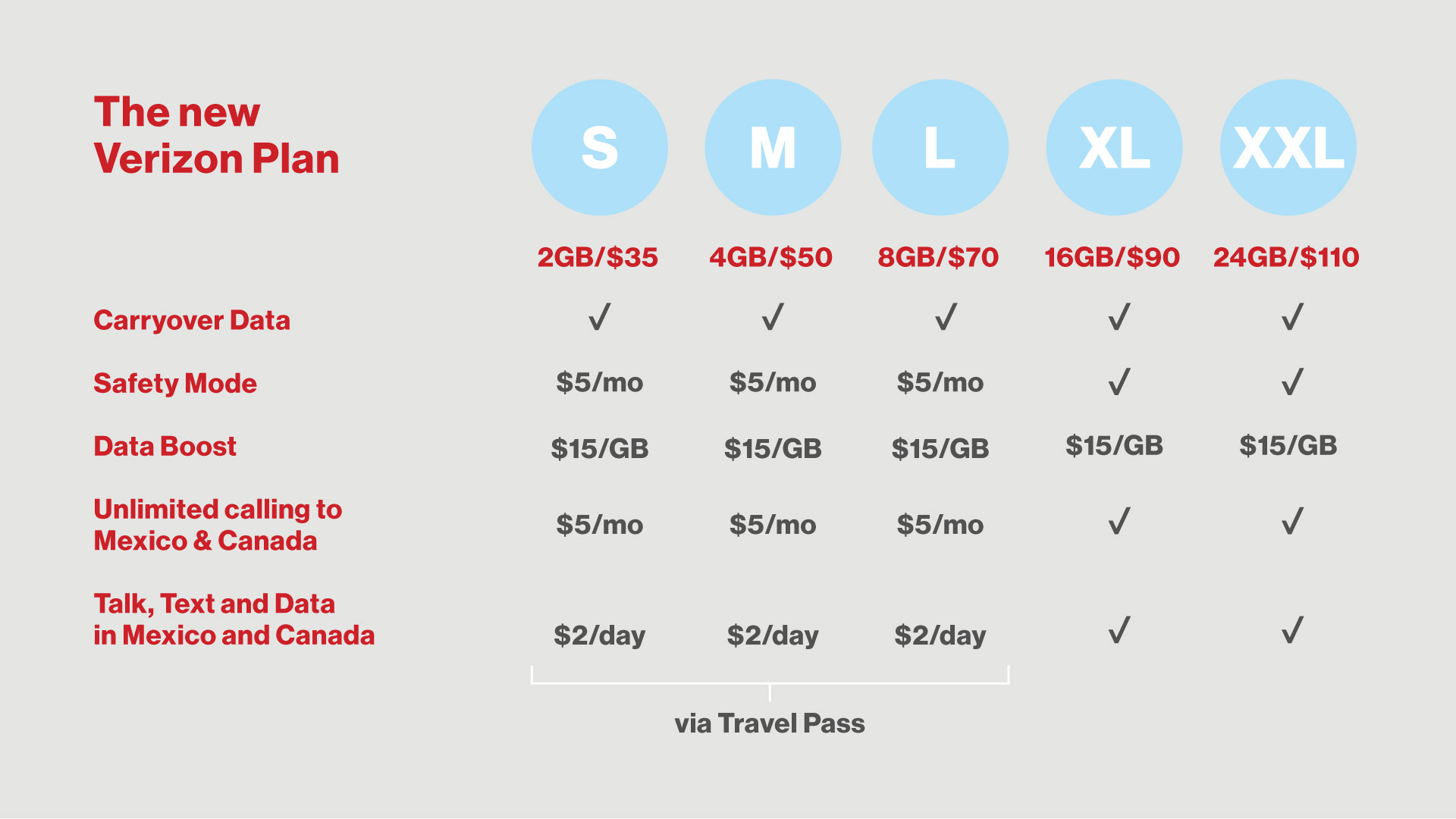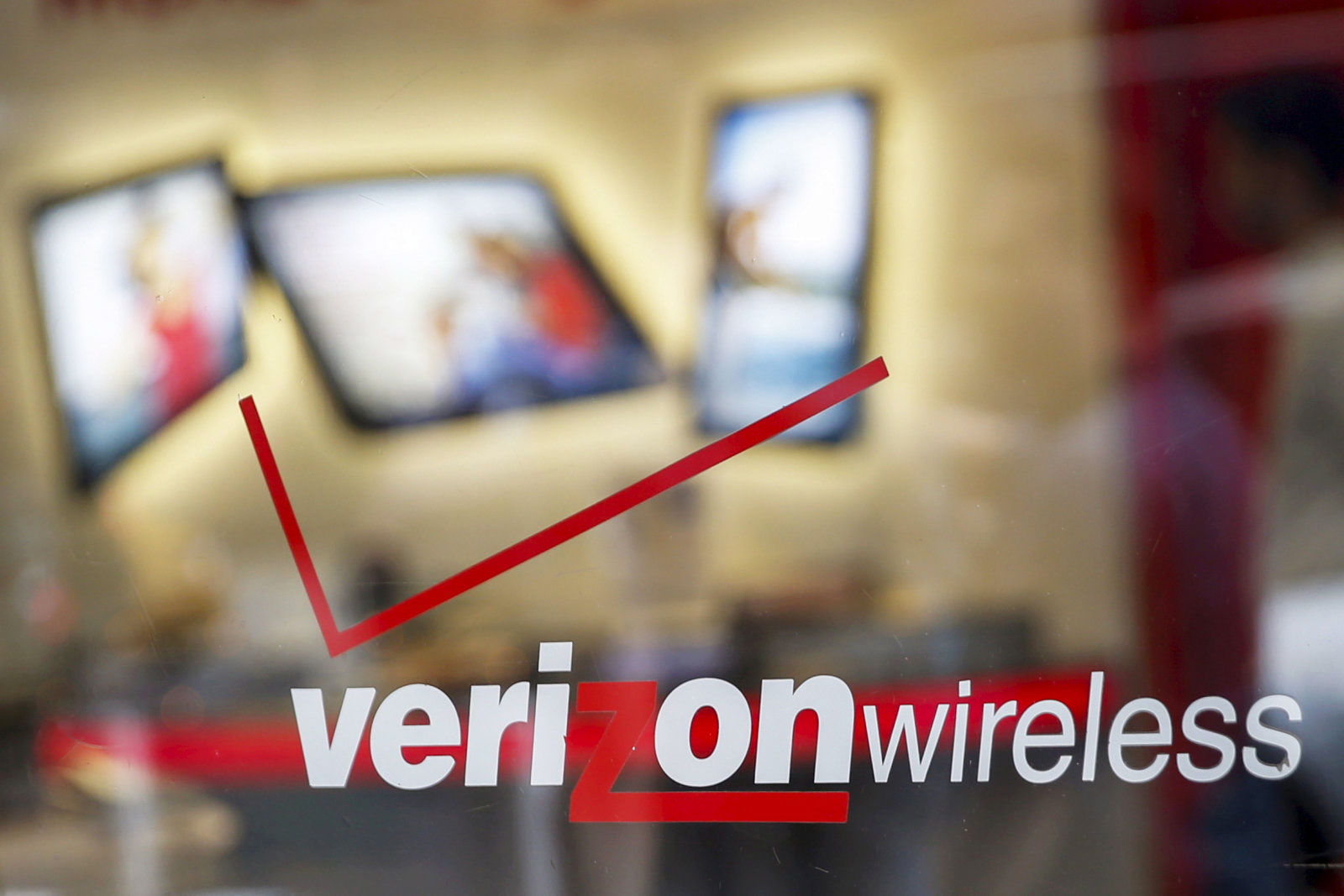On Wednesday, Verizon took the wraps off some changes to its wireless plans it promises will “transform your wireless experience.” But really, other than some clever marketing names, the new features aren’t revolutionary. In fact, they’re outdated.
Let’s start with the most egregious. “Overages are over,” Verizon proclaimed in the Safety Mode section of its press release. But those pesky surcharges are still there, buried deep in the fine print. Safety Mode is just a ridiculously roundabout way to avoid them.
When you hit your monthly data limit, Safety Mode drops your speeds to 128kbps (3G) from 4G LTE instead of charging you for eating up more high-speed bytes. Sound familiar? It’s because T-Mobile and Sprint, along with many low-cost carriers, have been doing this for years now.
Being late to the party isn’t a crime, but Verizon’s oddly cumbersome implementation of Safety Mode is. First off, the feature requires an opt-in, instead of being automatically applied to eligible lines like with T-Mobile and Sprint’s Better Choice. The part that makes me mad is that Safety Mode is only included in Big Red’s XL and XXL plans; S, M and L plan subscribers have to pay $5 per month for the privilege.
I asked a Verizon spokesperson what would happen to a customer who had not opted for Safety Mode and went over their limit. There are several options, he explained. After going over your plan data, you’d eat into your promotional data (such as limited-time extra bytes), then use up your carryover data. Following that, if you didn’t opt for Safety Mode, you can get Data Boost for an extra $15 per 1GB that period or change your plan to a larger size and backdate it to avoid the overage.

If you did none of those things, you’d be charged $15 per 1GB over your limit, and you can carry over what’s left from that gig. So, overages aren’t really over; they’re just not as easy to incur as before.
Carryover Data is also a highlight of the new Verizon plan, letting you roll unused bytes into next month’s allowance. That’s the same grace period as AT&T, which has been offering rollover data since January 2015, but it’s not as generous as T-Mobile’s one-year window for leftover gigs. So Verizon’s stab at this is less about it transforming the wireless experience and more about adapting to other carriers’ models.
It’s nice that Verizon is adding more data to its plans (although it would be nicer if it were free), but it still lags behind its competitors. Taking into account the monthly access fees, Verizon’s new Small plan includes 2GB of data for $55 a month, while Sprint offers 3GB for $50 each month. T-Mobile, which bundles unlimited video and music streaming via select partners in most of its lines, also offers 2GB of data at $50 a month. Really, then, Verizon was just playing catch-up in the pricing game.
That said, Verizon does reportedly have the best network performance, according to Tom’s Guide and RootMetrics, whereas Sprint is notorious for its sluggish speeds and T-Mobile’s coverage is not as comprehensive as Big Red’s.
But with the emergence of WiFi-cellular hybrid carriers, and Google’s Project Fi winning customers over, Verizon will have a tough time retaining its lead if it continues to play catch-up in such a belated and clunky fashion.
*Verizon has acquired AOL, Engadget’s parent company. However, Engadget maintains full editorial control, and Verizon will have to pry it from our cold, dead hands.
(47)

